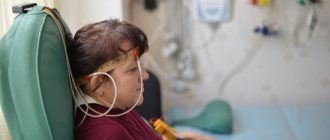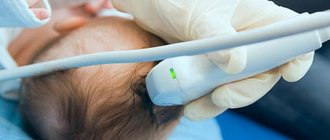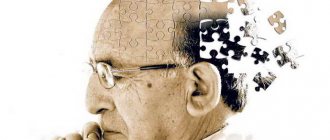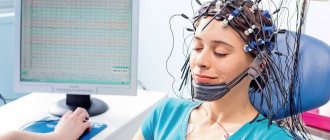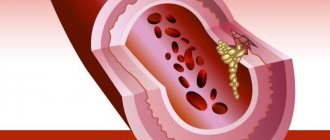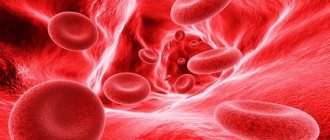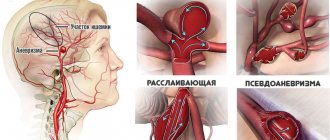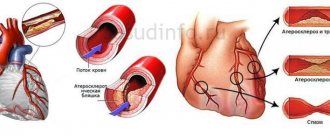All of you are probably familiar with such a physical phenomenon as echo. In nature, echo appears in a variety of places in the mountains, in the forest, in empty rooms (in an apartment, concert hall, temple, well) and so on.
Echo manifests itself in such a way that it repeats sounds, voices, words. In the place where the echo exists, any spoken word will be repeated with a slight delay. In the mountains and forests, sounds can be repeated not once, but many times.
In ancient times, the existence of echoes was explained by the presence of mimicking spirits or magic, but with the advent of the science of physics, this phenomenon was studied in detail, and even more put at the service of man (echo sounders and other devices).
In order to understand what an echo is, you must first understand the nature of the word sound.
Sound concept
Sound is the propagation of waves in a gaseous medium (in this case), that is, in the air. Simply put, air is a gaseous medium.
By making sound, we thereby produce waves in this medium. This is similar to the waves that are formed when throwing a stone into the quiet surface of a pond. Exactly the same waves as in the case of water arise in the air. For the same reason, sound does not propagate in space, since there is no gaseous medium there and there is simply nowhere to form waves.
The ear of a person or animal is configured in such a way as to capture air vibrations, that is, those same waves. A certain strength and sequence of air vibrations are captured by the ear, after which they enter the brain, where they are given a meaning that is understandable for perception: sounds, voices, noise, individual words, and so on.
How to explain to a child what an echo is
To explain to a child what an echo is, you can give as an example the same quiet pond where you threw a stone. Waves arise from the center of the stone's fall and begin to diverge in all directions. As soon as the waves reach any obstacle, they are reflected and begin to reverse. The magnitude and strength of the reflected waves are less, but they are still present.
The picture below will be more clear for children:
The same thing happens with waves in the air. If sound is reflected from a surface that does not absorb it, the waves return back to their source, causing us to hear our own voice a few moments later.
The presence and strength of the echo also depends on the density and rarefaction of the air and many other factors:
1) range of the sound source and reflective surface;
2) the angle of this surface in relation to sound waves;
3) the interval between the direct and reflected wave.
Echo in nature
A person hears only a pronounced and strong echo due to the structure of his hearing organs. However, some animals are able to hear echoes all the time, even if they are very small. This phenomenon has been adopted by some species of animals, for example, bats. Bats make a sound that bounces off surfaces and comes back.
The ears of bats are extremely sensitive and can detect the slightest changes in air vibrations, in particular their own echo. A bat, even developing enormous speed, never encounters an obstacle in flight, since it knows exactly where and at what distance it is.
What's next?
For some reason, some patients tend to believe that the conclusion of an ES is already a sufficient reason to prescribe independent treatment, but this is certainly a big mistake.
A specialist diagnostician, of course, deciphers the echogram quite accurately, but the conclusion made on the basis of the examination results still includes only a preliminary diagnosis. A more accurate diagnosis can only be made by the attending physician who has a medical history and the results of other studies. You also need to take into account the fact that additional diagnostic methods and tests may be needed.
Thus, we must not forget in any case that after ES, you need to contact your doctor with its results, but definitely not draw up a treatment regimen for yourself.
As follows from the above, echoencephalography is a fairly reliable, informative, safe and certainly accessible method of studying the brain. There are no obstacles to its implementation and therefore, if there are specific indications, it is worth giving preference to this particular diagnostic method.
Speed of sound in water and other media
Let's now talk about the speed of sound in a liquid. Particularly in water. It was, of course, more difficult to measure the speed of sound in a liquid. But in 1826, the following experiment was carried out in Lake Geneva: a bell was lowered into the water and at the same time a torch was raised above the water.
Rice. 1. Determination of the speed of sound in water
The researchers in the boat struck the bell, which was underwater, with a hammer. As a result, the sound, which spread through the water and under the water, reached the observer and at that moment another torch was raised on another boat. The time during which this observation occurred was recorded. So, the speed of sound in water in this particular experiment was 1440. The speed of sound in water at 8 C is 1440 .
Please note that in this case there is also a dependence on water temperature. Of course, the highest speed of sound propagation is the propagation of sound in solids. For example, in steel the speed of sound propagation is 5000, i.e. 5 km per second. Depending on the composition of the steel, the speed may vary. It can be more and even be 6000.
We can draw the following conclusion about the quantities on which the speed of sound in various substances depends. Firstly, the density of the substance plays a huge role. Let's look at the table and observe how the speed of sound changes depending on the substance.
| Substance | Sound speed |
| Water | 1483 |
| Lead | 2160 |
| Tree | 5000 |
| Glass | 5500 |
| Copper | 4700 |
| Steel | 5000 6100 |
The second parameter that determines the speed of sound in a medium is temperature. We talked about this above.
Methods
There are different ways to examine the heart:
- One-dimensional or M-method. When performing it, the doctor sees on the monitor screen a record from different heart systems in the form of a graph. This method allows you to accurately determine the size of the heart and the contraction of the ventricles.
- Two-dimensional or B-method, in which a familiar image is displayed on the screen in shades of white and gray. The picture moves, on it you can observe the contraction of the heart muscle and the closure of the valves, as well as their mobility. In this case, it is possible to measure the thickness of the heart walls and determine the contractility of the ventricles. It is possible to see blood clots, aneurysms or tumors, if any.
- Doppler echocardiography. It is performed using Doppler ultrasound of the heart. Previously, a special apparatus was used to carry out this method. Doppler analysis makes it possible to evaluate the speed and direction of blood in the chambers of the heart, as well as in the vessels that come from it.
When diagnosing heart defects, each of the methods is important; in particular, Doppler echocardiography is a more effective method for detecting pathologies. Blood should flow in one direction, and if it first flows in one direction and then returns in waves, then this allows one to diagnose insufficiency of one of the valves.
The doctor can also measure the speed of blood flow, and from this calculate the diameter of the opening of the vessel through which it flows. Such ultrasound diagnostics also evaluate the degree of narrowing of the vascular openings and the volume of blood returning back.
In addition to the standard methods described above, there are also non-standard ones, when the study is carried out through the esophagus. An ECG with exercise is also possible. These studies can only be carried out in specialized centers and only by experienced specialists. Now that you already know what it is - ECHO CG, these methods can be considered separately.
Sound reflection
Sound reflection
How can you imagine the reflection of sound? You can imagine it as follows: if a sound wave propagates in a substance and reaches the boundary with another substance, then when interacting, the particles of the second body also begin to oscillate. In turn, the particles of the second substance at the interface will transmit their vibrations not only into their environment, but also transmit them to the environment from which the wave came. This is how a reflected wave is created. The reflected wave received by the observer can be perceived by us as an echo.
Echocardiography through the esophagus
This method is indicated in the following cases:
- If there is suspicion of bacterial damage to the heart valves.
- During a routine examination in the presence of an artificial valve (especially if the valve is aortic). The procedure is also performed for valve replacement.
- When suffering a stroke, cerebral circulatory disorders, especially with a permanent form of atrial fibrillation. This will exclude or confirm the embolic nature of these diseases.
- Before performing cardioversion (this is a special pulse stimulation that allows you to normalize the heart rhythm in certain types of arrhythmia).
- If there is a suspicion of an atrial septal defect.
- When you need to study the functioning of the heart, its general condition, and the patient has costal ossification or other pathology of the chest wall, due to which ultrasound waves do not reach the heart.
In certain cases, it is prohibited to conduct an echogram through the esophagus:
- If there are tumors, diverticula or spasms of the esophagus.
- In the presence of dilated veins of the esophagus.
- If the cervical vertebrae are unstable.
- If the patient has severe osteochondrosis in the cervical spine.
- There is a pronounced gag reflex.
- There is bleeding from the esophagus and parts of the intestine.
- If the esophagus is affected by radiation therapy.
If at least one condition from the last list is met, then performing ECHO CG through the esophagus is prohibited.
Echo
Echo is a sound wave reflected from an obstacle that is perceived by an observer.
Fig.2. Reflection of sound. Echo
Please note that we cannot always hear an echo, but only if at least 0.06 s passes from the moment the sound is created to the moment the reflected sound is perceived. If the time is shorter, then we will not hear any echo. Our hearing aids do not perceive the signal as two separate sounds. This is why we don't hear echo in small rooms. A huge role is also played by how many things are in the room that absorb sound. For example, soft porous substances absorb sound well; in this case, no echo is created.
Echo is one of the main problems when designing concert and theater halls. Therefore, the special upholstery of these halls is done in such a way that there is no reflection or this reflection is minimal. But there are areas where we must necessarily create this reflection and strengthen it.
Rice. 3. Horn
For example, the well-known horn works exclusively on the principle of sound reflection. This is either a round or square tube into which we pronounce something, and the sound, as a result of reflection from the walls of the horn, is collected into one beam, which propagates in a certain direction with great intensity. In this case, the sound can be heard much further.
List of additional literature:
Are you familiar with the propagation of sound? // Quantum. 2008. No. 3. P. 32-33. Byalko A.V. Physics of musical harmony // Quantum. 1987. No. 5. P. 41-43. Elementary textbook of physics. Ed. G.S. Landsberg. T. 3. M., 1974.
Echo ES: the essence of the procedure, effectiveness in brain pathologies
Echoencephalography of the brain is one of the modern hardware research methods based on ultrasound neurophysiology and allows one to assess the functioning of the central nervous system.
The brain is the actual control center of the entire body. Its condition affects the functioning of all organs and systems. It is very important to promptly identify any disorders of brain activity.
This task is performed by modern diagnostic methods, including EchoEG.
The method was proposed by the Swedish neurosurgeon Lars Leksell (later the founder of radiosurgery), who began using it in 1956.
What is ECHO EG of the brain
Echoencephalography of the brain is based on an ultrasound research method; in fact, it is close to ultrasound. A special device - an echoencephalograph - records the reflection of ultrasonic waves from tissues located outside and inside the brain. The method is based on the fact that tissues of different densities reflect ultrasound waves differently.
The wave impulses are converted into an electrical signal, recorded by an echoencephalograph in the form of a diagram of brain activity. It is also possible to display it as a picture on the device monitor.
Both graphic and visual images are informative for a specialist, because from them he can determine the presence of various pathologies.
The accuracy of this method is especially important in cases where it is urgently necessary to make an accurate diagnosis to save the patient’s life.
What is the essence of the procedure
The EchoEG procedure is absolutely painless, non-invasive, so it is performed even on small children, pregnant women and nursing mothers.
No special preparation is required to conduct an EchoEG - no dietary restrictions, no increase or decrease in drink intake. The only thing a laboratory technician can clarify is whether the patient is taking strong medications that affect brain function.
This question often arises in instrumental studies that require accurate interpretation of neurophysiological data.
The procedure is carried out in a lying position, semi-sitting or sitting in a comfortable chair with leg support. A mesh cap made of wires is placed on the head of the subject, in certain places of which sensors are attached.
Each sensor is designed to show the activity of a specific area of the brain.
For better adhesion of the sensor contacts to the scalp, a special gel is applied pointwise to the scalp in the right places, which is harmless and does not cause allergic reactions.
First, the right and left sides of the head are examined, then the frontal lobe, the upper part, and the back of the head. The duration of echo diagnostics is approximately 10-15 minutes. It can be carried out in a clinic, a special room in a hospital, as well as in a hospital ward and even in an ambulance.
What does the technique reveal?
Using echoencephalography, many diseases of the brain and nervous system as a whole can be detected. They can touch blood vessels, nerves, and tissues. But the most important thing is that these are almost always dangerous conditions that threaten serious consequences for patients.
EchoEG helps to recognize:
- causes of vegetative-vascular dystonia;
- diseases of the nervous system that cause pain in the neck;
- pathologies of the central nervous system that cause severe headaches;
- the presence of a stroke (or its threat);
- concussion after a head injury;
- cerebral ischemia;
- encephalopathy;
- syndrome of the verteblar-basilar artery system;
- narrowing or expansion of the lumen of the veins, the causes of this disorder;
- the presence of tumors in the brain;
- hydrocephalus (water on the brain);
- increased intracranial pressure;
- inflammatory processes in various brain structures;
- presence of meningoencephalitis.
Basis of the method
Echoencephalography of the brain uses ultrafrequency electrical impulses that move piezoelectric plates applied to the head. The generated mechanical ultrasound propagates vibrations to the tissues of the skull, brain and its membranes.
At the boundaries of environments of different densities, these signals undergo echolocation. A graphic picture is displayed on the monitor screen - an echoencephalogram, or a planar image when conducting a two-dimensional study (for example, during neurosonography in children).
Based on the time of their sending and return reception, the distance to the structure involved in the reflection of the signal is calculated.
The technology of echoencephaloscopy was introduced into clinical practice by the Swedish neurosurgeon L. Lassell in 1956. He used a modification of an ultrasonic flaw detector used in industrial production.
Indications and contraindications for ECHOEG in adults
EchoEG diagnostics is usually prescribed for certain complaints that may indicate pathologies of the central nervous system:
- regular long-term or severe headaches;
- frequent fainting, dizziness;
- feeling of lack of air;
- disorientation in space, impaired coordination of movements;
- traumatic brain injury with nausea, vomiting;
- hearing impairment (humming noise in the ears).
This diagnostic method is safe. But there is still one contraindication for the EchoEG procedure. This type of diagnosis is contraindicated in the presence of scratches, abrasions, or open wounds on the scalp where the sensors are installed.
How to prepare for EchoEG
EchoEG does not require special preparation. If the subject takes any medications on an ongoing basis, it is necessary to discuss their dosage regimen with a doctor. The procedure does not require compliance with a special dietary or drinking regime. The study does not affect the person’s well-being and can be carried out even in serious condition.
Pregnancy, lactation, old age, and the presence of severe concomitant diseases are also not an obstacle to the procedure.
The main requirement is the integrity of the skin and soft tissues of the head. Otherwise, diagnosis will be difficult and inconvenient for both the patient and the doctor.
Methods of carrying out the procedure
There are two main types of EchoEG procedure - one-dimensional, or M-mode, and two-dimensional.
M-mode diagnostics is a quick method for identifying dangerous brain diseases. This method of research makes it possible to determine the size of tumors, the area of tissue areas affected by inflammation or necrosis, and the degree of displacement of parts of the brain.
M-mode also shows how deviated from normal values the intracranial pressure indicators are. To collect research data, sensors are installed above the eyebrow at the temple, above the ear and behind it. The results look like graphs of reflected ultrasonic signals.
However, this method does not reveal all the details in the most complex cases, so to clarify the diagnosis, the patient is often prescribed a CT or MRI.
The two-dimensional method of echoencephalography (ultrasound scanning) allows you to obtain a flat image in the form of diagrams.
During this examination, only one sensor is used, which moves along the surface of the head during the procedure.
Typically, the examiner will place an ultrasound probe on areas where the bones of the skull are as thin as possible so that the ultrasound waves penetrate deeper into the brain.
Pros and cons of echoencephalography
The technique of ultrasound examination of the brain and blood vessels has significant advantages, especially in the practice of pediatricians and neonatologists.
Thus, EchoEG of the head is recognized as a harmless and safe method for diagnosing intracranial pathology in children, including newborns, and expectant mothers, and therefore has no age restrictions.
It does not cause pain or discomfort, is non-invasive and has virtually no contraindications.
In some cases, ultrasound is performed repeatedly, even at short intervals, and is also successfully used as a screening test. The specialist sees the diagnostic result in real time, and the patient can receive it immediately as soon as the manipulation is completed.
Echoencephalography does not require specific preparation or hospitalization. It can be carried out not only within the walls of a medical institution, but also at home and even outside, since the device can operate autonomously from a battery, but children are still preferred to undergo the examination in a clinic.
Ultrasound makes it possible to obtain images in different modes, it is simple to perform and is much more affordable at the price of many other diagnostic procedures. Ultrasound diagnostic devices for brain pathology are available in maternity hospitals, hospitals and most clinics.
The method has few disadvantages:
- Subjective assessment of the result, depending on the specific ultrasound diagnostic specialist and his qualifications;
- Obtaining a “flat” image, which somewhat limits the diagnostic value;
- Lower information content compared to MRI.
However, despite these disadvantages, the method is widely and successfully used due to the advantages that significantly outweigh the listed disadvantages of ultrasound.
It is especially indispensable at the initial stage of the diagnostic search and when there is no possibility in the near future to resort to more accurate and expensive studies.
In some cases, it is sufficient to make a diagnosis or exclude pathology, prescribe treatment and monitor its effectiveness.
Source: https://kemvaleo.ru/diagnostika/ehoencefalografiya-chto-eto-takoe.html
Conditions for the existence of an echo
Several conditions are required for an echo to appear. Have you ever wondered why echo is not heard in an apartment or a store, but at the same time it is extremely easy to hear in the mountains? The fact is that the human ear hears an echo only when the reflected sound sounds separately from the spoken sound, and is not layered on top of it. To create such an effect, it is necessary that the time elapsed between the influence of the sound itself and the reflected wave on the ear must be at least 0.06 seconds. In a normal environment (for example, in an apartment) this will not happen due to the short distance and various objects that also absorb sound.
Why do it?
Echoencephalography provides very broad diagnostic capabilities, so it is difficult to underestimate its importance.
With its help, you can examine various brain structures, the periosteal space, and median pulsations (which is very important when measuring intracranial pressure). This research method tells us quite accurately how brain structures function, whether there are dangerous pathologies, neoplasms (which is very dangerous), and whether intracranial pressure is increased.
Echoencephaloscopy
Due to its significant advantages, such an examination is used independently, since it is indeed very informative and reliable, but in case of severe pathologies, ECHO EG is also used as a preliminary research method before performing computed tomography or magnetic resonance imaging.
Also, this diagnostic method is often used as an additional control over the ongoing treatment already prescribed by a specialist based on the results of previous studies.
Anechoic chamber
There is a room where there is no echo at all. It's called an anechoic chamber. There are two types of anechoic chambers. Each type serves to dampen one or another type of echo. Simply put, in such a chamber, sound (or radio waves) simply do not reflect from the walls. The first acoustic type. It, as the name implies, serves to suppress ordinary sound echo. The second, accordingly, is radio frequency and is necessary to suppress the reflection of radio waves.
Literature[ | ]
- Gezekhus N. A.,.
Echo, in physics // Encyclopedic Dictionary of Brockhaus and Efron: in 86 volumes (82 volumes and 4 additional). - St. Petersburg, 1890-1907.
| This is a draft article on physics. You can help the project by adding to it. |
To improve this article it is desirable:
Please, after fixing the problem, remove it from the list of parameters. After eliminating all the shortcomings, this template can be deleted by any participant. |
Ancient Greek myth about the nature of echoes
The ancient Greeks explained many natural phenomena with myths. Echo was no exception. The myth about the birth of echo goes something like this: one day, the jealous wife of Zeus, Hera, punished the beautiful nymph Echo, forbidding her to answer questions. Echo could only repeat the last words addressed to her. Echo saw the beautiful Narcissus walking through the forest. He heard the rustling and exclaimed:
- -Who is there?
- -Here! Echo shouted back.
- -Come here!
- -Here! Echo answered joyfully, running towards Narcissus, but he pushed her away, because he believed that only he himself was worthy of his love. So now the beautiful nymph hides in the forests and mountains, occasionally repeating the words of the travelers.
Where can I get an ECHO KG done and how much does it cost?
Echocardiography is a simple and accessible diagnostic method for everyone. It can be carried out at a public or private medical center. The procedure can be carried out free of charge or for a fee, but in any case it must be carried out on the direction of a doctor.
Specific methods can only be carried out in a highly specialized center and only by experienced medical personnel with appropriate qualifications. Such doctors must be able to provide assistance to the patient if he suddenly becomes ill during the procedure. Of course, prices for services in such institutions will differ.
The cost of a standard ECHO CG in a private hospital can be 1200-4000 rubles. The cost of a study carried out through the esophagus is higher - about 2000-6000 rubles. This is due to the need to attract additional equipment to conduct the study.
To summarize, the average price for a service is 3 thousand rubles, although even in Moscow in some medical institutions the price can be less than two thousand rubles. In some hospitals it can cost as much as 8,000 rubles.
About echolocation
Everyone knows that bats and dolphins use echolocation to navigate in space. However, few people can answer the question: how does it all work? And it works something like this. First of all, the mouse emits ultrasound. Then she catches the echo of the same sound emitted to her, reflected from objects. The bat has the ability to recognize the ultra-short intervals that pass from the emission of a sound signal to the return of the echo. In this way, the mouse determines the distance between trees or other objects, and also sees how far this or that insect is from it. What is surprising is that the bat perfectly distinguishes the echo from a static (immovable) object from a moving object.
Echolocation was discovered in dolphins more than half a century ago. Dolphins, like bats, use ultrasound, mainly at frequencies of 80-100 gHz . The signals emitted by dolphins are incredibly powerful: for example, they can see a school of fish more than one kilometer away!
Small interesting facts
- If the distance from the noise source to the nearest obstacle (wall or rock), then no echo is formed.
- The famous German river Rhine is full of surprises. For example, there is a place where the echo repeats 20 times
- In the city of Verdun, in France, there are two towers. If you shout while standing between them, you will hear the echo of your voice up to 11 times.
- The Ear of Dionysus is a real record holder in the field of echo. This is a grotto in Syracuse, shaped like a human ear. But that’s not what makes him interesting. Due to its shape, the grotto makes the echo incredibly strong. Throwing a stone or a simple clap will echo out of the darkness with real thunder
Sources:
- https://otomkak.ru/chto-takoe-eho/
- https://interneturok.ru/lesson/physics/9-klass/mehanicheskie-kolebaniya-i-volny/skorost-zvuka-otrazhenie-zvuka-eho-eryutkin-es
- https://vivareit.ru/eho-interesnye-dannye-i-fakty/
Preparation and execution
There are certain recommendations for the patient that he must adhere to for successful echocardiography through the esophagus:
- Do not eat 6 hours before the procedure and do not drink 4 hours before.
- Before the examination, it is necessary to remove removable dentures, if any.
If the patient is prepared, he is allowed to conduct the study. The doctor irrigates the patient’s oropharynx with lidocaine, which will reduce the gag reflex and discomfort. The patient lies on the left side, a mouthpiece is inserted into the mouth, after which a thick probe with an optical fiber - an endoscope - is inserted into the esophagus. It is through it that sound waves are sent and received. The procedure takes about 15-20 minutes, echocardiography is filmed.
